The engravings of the Austrian painter Rudolf Alt are very important, as we learned the history of Pest and Buda in many cases from these works. On one of these engravings made in 1845, which shows Színház Square - today's Vörösmarty Square - an interesting building, a stall, is visible on the left edge of the picture. This was the "Hebe's Kiosk" run by confectioner Péter Fischer, which was the first outdoor ice cream stand in Pest and Buda. This year marks 180 years since it moved here in 1842, to the Színház Square shown in the picture, so in this article, we explore the history of this interesting building and its owner.
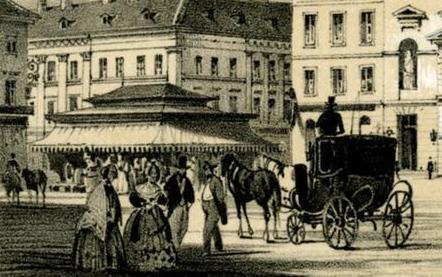
The tent-like Hebe's Kiosk on the former Színház Square in 1845 from an engraving by Rudolf Alt (Source: FSZEK Budapest Collection)
The history of ice cream is almost as old as the history of refrigeration and freezing, which goes back thousands of years. Similar chilled fruits were already consumed in ancient times, but the spread of today's ice cream is mostly attributed to the turn of the 17th and 18th centuries. In Hungary, people could find ice cream in various forms from the 1780s, but it was still only sold in cafés and restaurants along with many other sweets and drinks. Count József Gvadányi was one of those who reported on eating ice cream for the first time. In his work "A Village Notary's Trip to Buda" published in 1790, he writes as follows:
“I went and stood at the far end of the bridge,
Where a fair tent stood on the left side;
Many walkers enjoyed themselves in this,
One asking for lemonade, the other for ice cream."
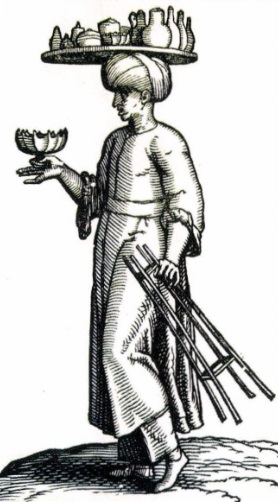
Turkish wandering sweet seller in the modern age (Source: Judit Rédey: Cold cream and Spanish roll. The story of ice cream, ice lolly and parfait, Budapest, 2007)
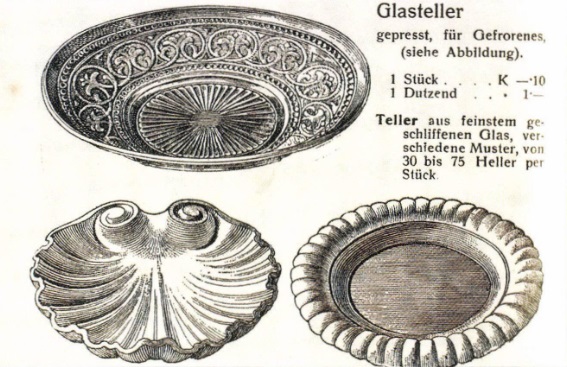
At first, ice cream was served in metal or glass bowls, but original clam shells were probably also used for this purpose.
This is where the clam shape of many early ice cream containers could come from (Source: Judit Rédey: Cold cream and Spanish roll. The story of ice cream, ice lolly and parfait, Budapest, 2007)
Back then, the cooling sweet was mostly called "licker" ('nyalat') or frosty. The word ice cream appeared for the first time in 1775, while our expression 'fagylaltozik' (eating ice cream) only appeared in 1844. The most elegant pastry shop in Pest-Buda, that is, its ice cream parlour, according to the terminology of the time, was Hebe, owned by Péter Fischer. In 1991, Miklós Rózsa wrote a longer study about Fischer's work and his confectionery in the journal Tanulmányok Budapest Múltjából (Studies from Budapest's Past), which is a great help in getting to know his activities.
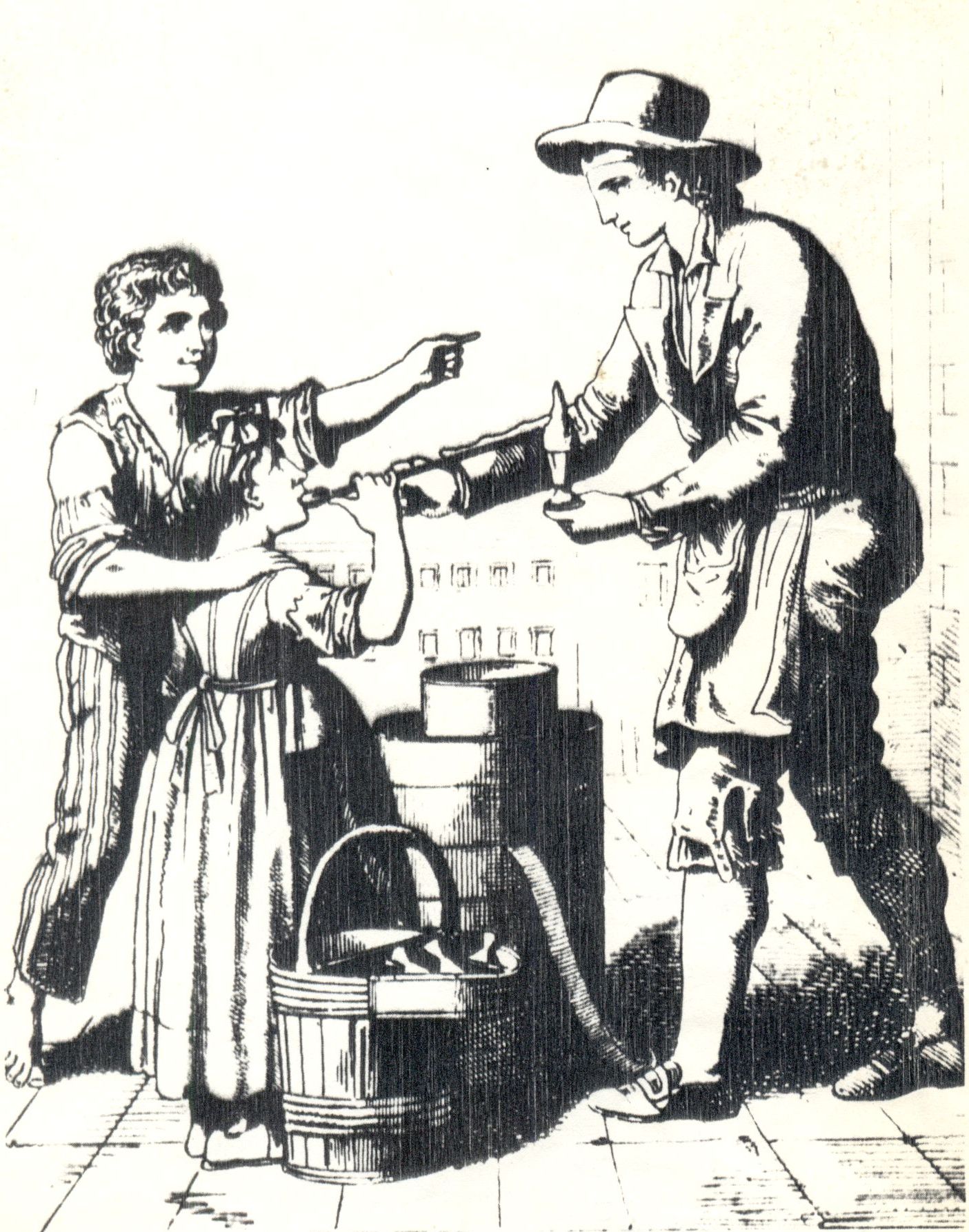
An Italian ice cream merchant gives a tasting in the 1800s (Source: Hungarian National Digital Archive – Hungarian Museum of Trade and Tourism)
Péter Fischer was born in 1801, and at first he apprenticed in confectioneries in Pest, then after several study trips and work abroad, he opened his first confectionery in Úri - now Petőfi Sándor - Street in 1823. Later, in order to reach high-class companies, between 1835 and 1836 he rented the rooms of the Redoute (predecessor of today's Vigadó), where he operated a kind of buffet table at balls, presenting his famous confectionery products. His experience and professional background soon gave him a serious competitive advantage, so it is no coincidence that he outgrew his business and moved to Szervita Square in 1837, where many dignitaries already visited his business.
This store was the first in Pest to have a huge glass storefront, thereby drawing attention to the store. The confectionery's trade sign depicted the ancient Greek goddess Hebe, whose role in mythology was to guard the nectar that ensures youth and eternal life, and to serve it on Olympus.
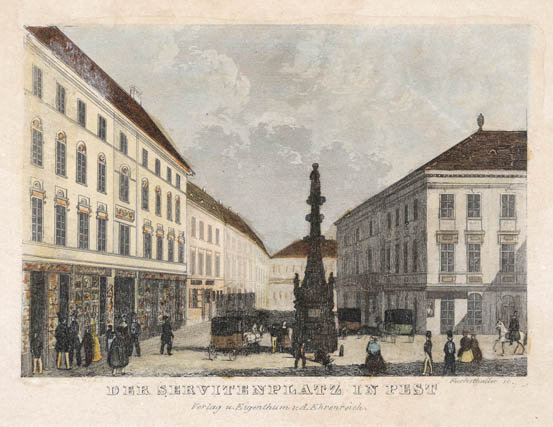
The part of Szervita Square in front of Fischer's shop in the early 1840s. Engraving by Fuchsthaller (Source: Budapest History Museum - The Graphic Collection)
It was also Fischer's innovation that in the summer of 1840, in the immediate vicinity of his shop, he set up a tent-like kiosk where he sold ice cream. In fact, it was the first outdoor ice cream parlour in the city. Hebe's Kiosk was also mentioned in contemporary newspapers, so one of the most famous newspapers, Regélő Pesti Divatlap, also wrote about it.
Immediately after it was set up, in May 1840, there were still fears that the kiosk would not be in the right place. In its issue of 30 May, they wrote: "The day before yesterday, confectioner Fischer opened his ice cream tent on Szervita Square under the name "Hebe's Kiosk"; the idea was very good, it is just a pity that the manure of the nearby coachmen's horses will not exactly have a pleasant effect on the ladies refreshing themselves."
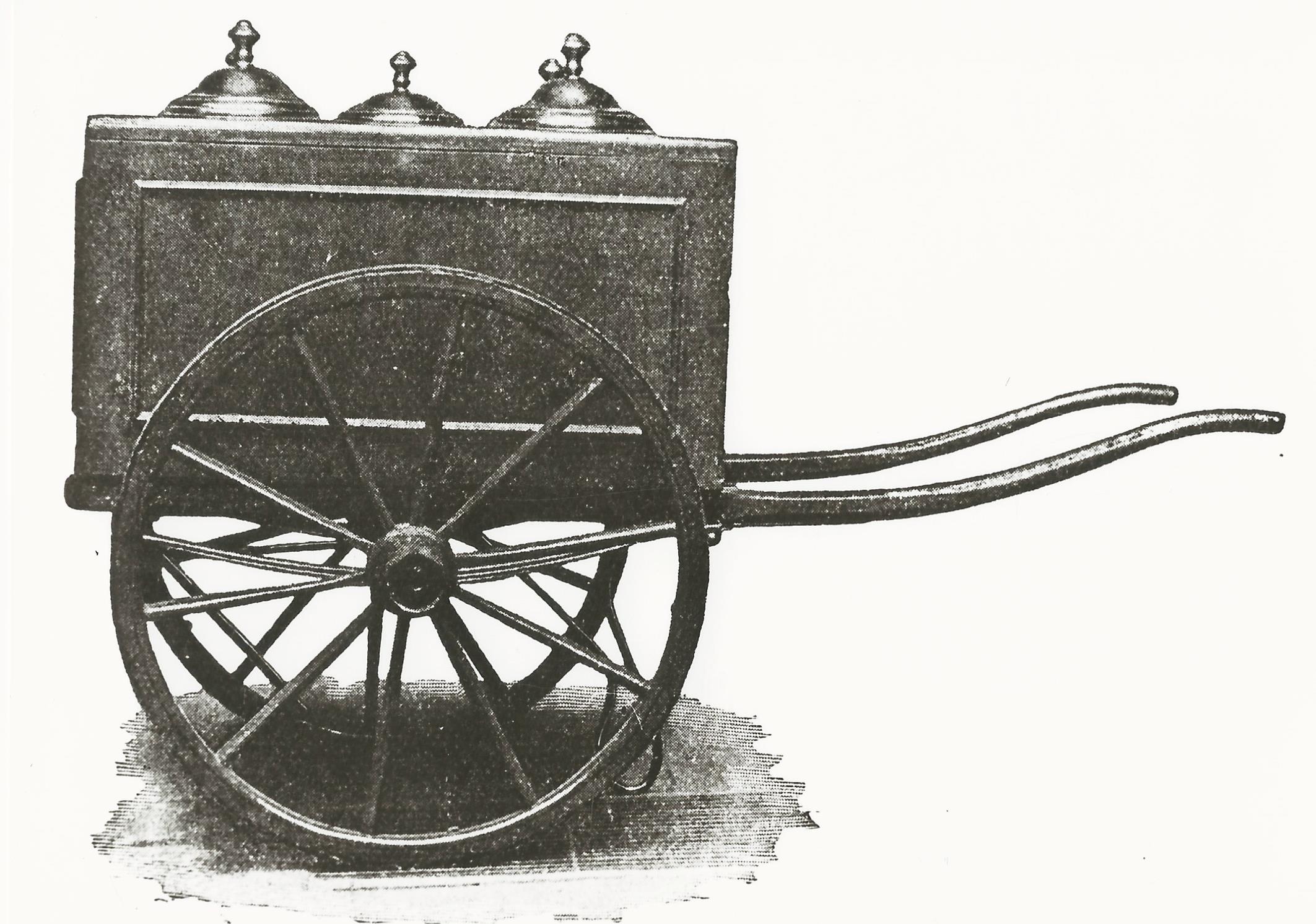
Ice cream cart at the turn of the 19th and 20th centuries (Source: Hungarian National Digital Archive – Hungarian Museum of Trade and Tourism)
A few days later, the news was reported favourably, in its 7 June issue, Regélő put it this way:
"The spirit of the ancient gods united with the current Turks' in the so-called Hebe's Kiosk in Pest. This delightful little house is opposite the shop of Mr. Péter Fischer, Pest confectioner, in the Szerviták Square, so that people of the elegant world can enjoy the ice cream he has made with the greatest comfort. The mentioned entertainment place is really magnificent both inside and out, and the flowers and plants placed in the group corner make the environment pleasant. Every evening since last week, this new place of lust is surprisingly lit up and open to the esteemed public, a large part of which stands around it in large numbers dreaming about the rich and tasty, luxuriously arranged set."
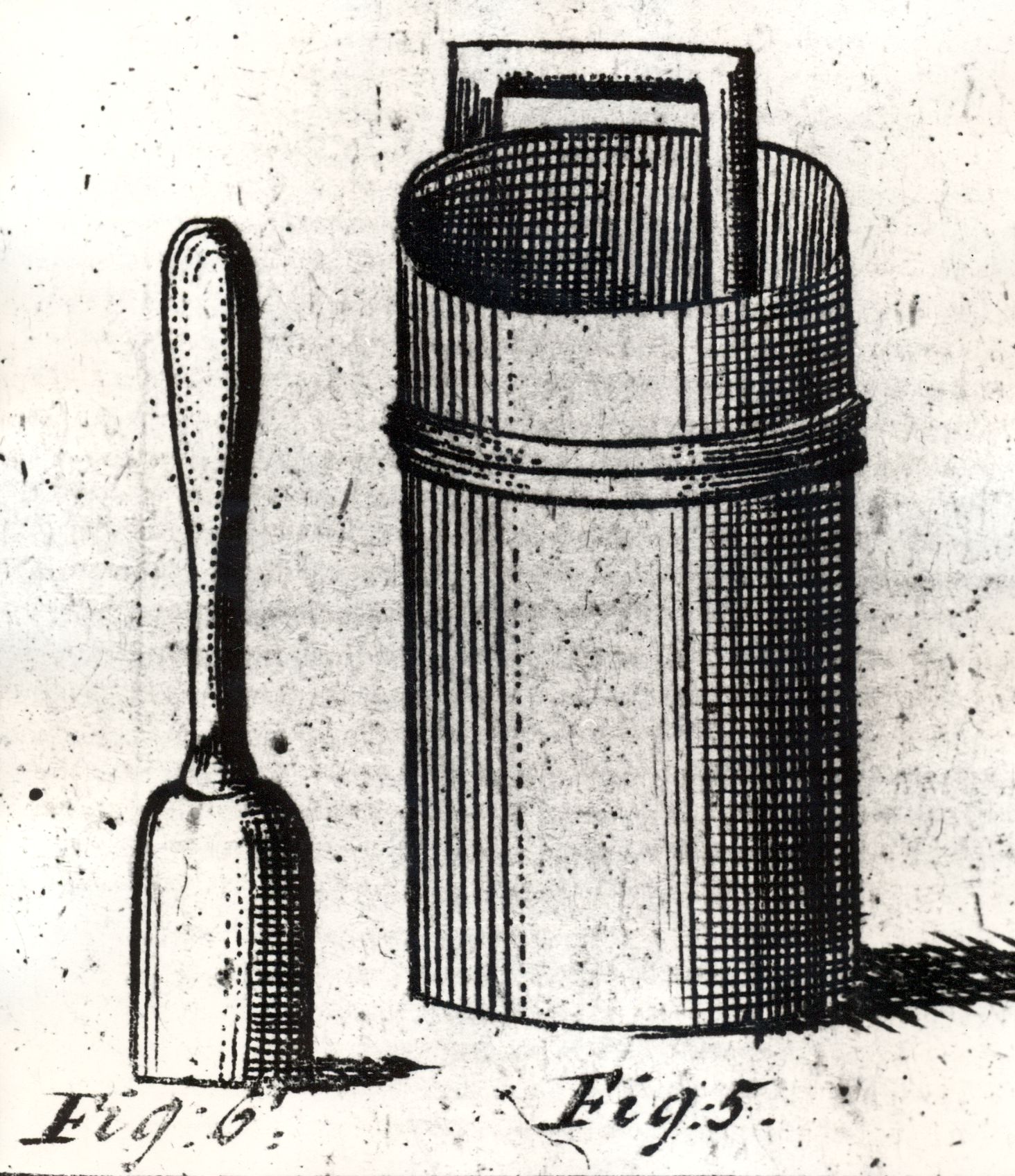
18th century ice cream maker (Source: Hungarian National Digital Archive – Hungarian Museum of Trade and Tourism)
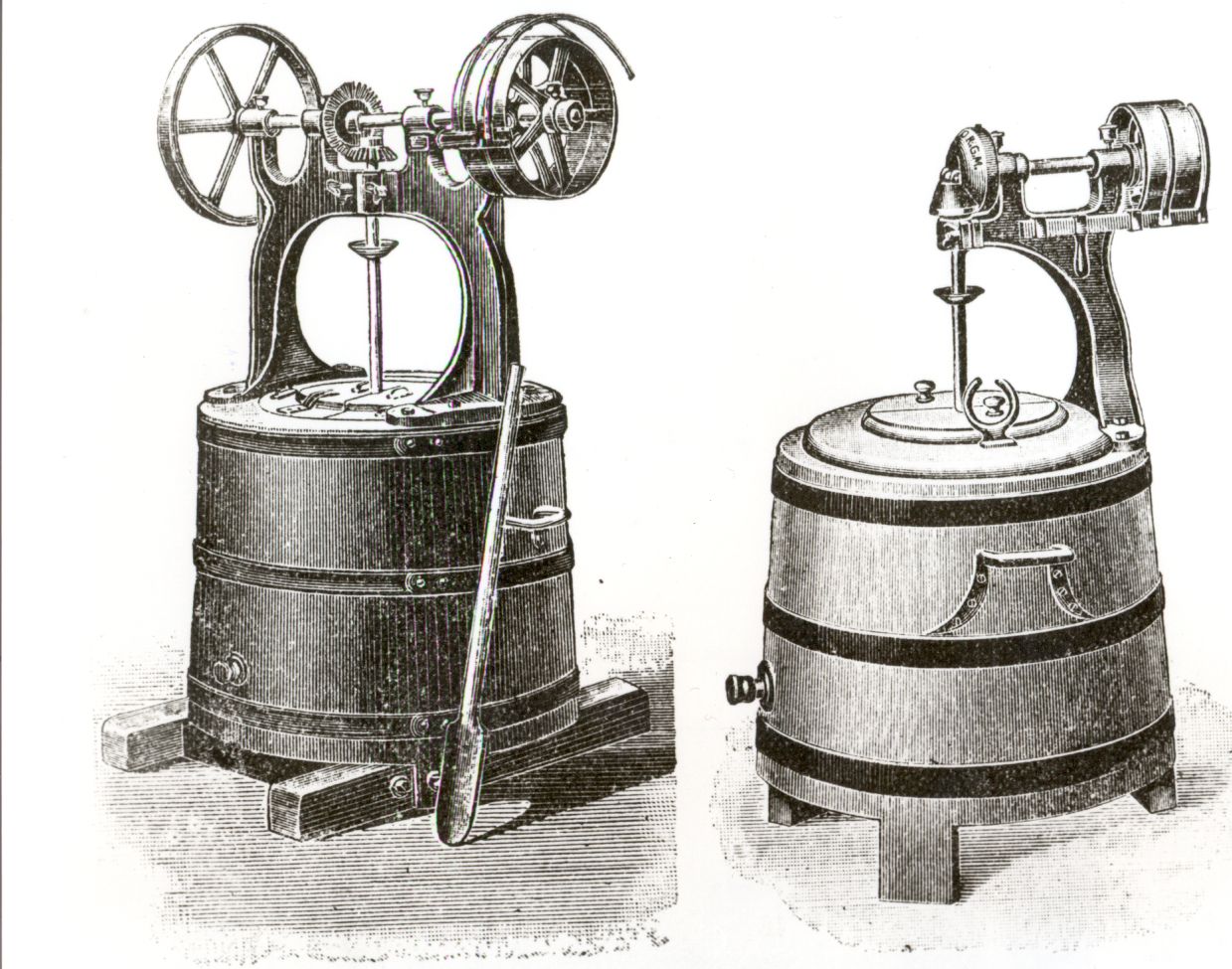
Old 19th century ice cream machines (Source: Hungarian National Digital Archive – Hungarian Museum of Trade and Tourism)
Although the place was very popular, the kiosk could only be on Szervita Square for a year and a few months because the ice cream parlour at the foot of the statue of Mary in the middle of the square disturbed the traffic and religious life, so it had to move. Two years later, in 1842, he managed to get permission in the immediate vicinity of the German Theatre, on the former Színház Square - today's Vörösmarty Square - where Hebe's Kiosk had a truly successful career. It became the first real big ice cream stand and primarily sold ice cream.
His kiosk soon became the centre of social life in Pest. According to reports, István Széchenyi came here countless times in 1842, and he had an ice cream after almost every theatre performance, and we also know from him that his fellow politicians, Ferenc Deák and Lajos Kossuth, visited the stand several times. In addition, many other contemporary reports and diaries mentioned the famous ice cream shop, including the Pest-born painter Ágoston Schoefft, but also Ferenc Pulszky, who in his report recalls Ferenc Deák as "sitting in front of the kiosk on Színház Square in the evenings, buying newspapers besides his ice creams". According to the descriptions, Fischer offered 12 types of ice cream at the time, but the main attraction was the special pomegranate ice cream, the recipe of which the master did not reveal to anyone.
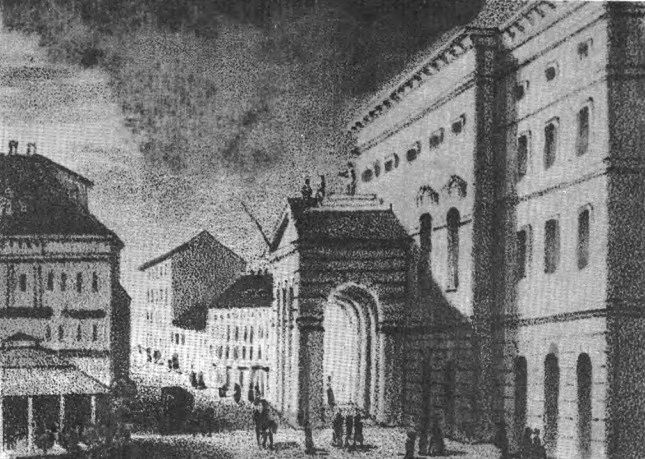
Hebe's Kiosk can be seen on the left and the German Theatre on the right. Stone print of Ignác Weissenberg (Source: Miklós Rózsa: Hebe's Kiosk (Data for the history of Martinelli Square and Vörösmarty Square in Pest) In: Studies from the Past of Budapest 23. (1991.)
.jpg)
Etched glass with the image of the former German Theatre and the Hebe's Kiosk on the left (Source: Budapest, 1947. No. 2)
No illustrations or engravings of the Szervita Square kiosk have survived, but fortunately we know several representations of the Színház Square kiosk. One of them is the image shown above, but the kiosk can also be found on other engravings, and even on a glass cup as a decoration. The pictures show that the sides of the kiosk were surrounded by a fringed sun protection tarpaulin hanging diagonally from the lower edge of its roof. In its appearance, it is reminiscent of the Limonadehütte in one of Vienna's most famous streets, Graben.
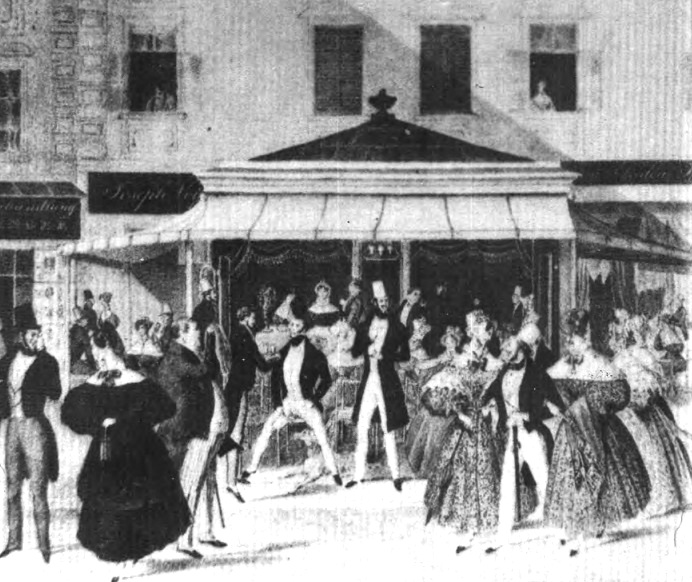
Ice cream kiosk on the Viennese Graben in 1836, reproduction of a colour lithograph by Alexander von Bensa
A guidebook published in 1845 describing Buda and Pest says the following about the kiosk:
"...the Színház Square was notable for its bad paving: but today only in the middle of the square - where the rental cars are parked - you can see some potholes that reveal the past. In the summer, the Hebe refreshment shop is open on all sides on the square, and under a stretched canvas roof, next to flower-studded tables, it offers nice cool shade and good ice cream."
The ice cream parlour that moved to Vörösmarty Square 180 years ago, however, was only able to be enjoyed by its owner and inventor for one year, as Péter Fischer died on 2 October 1843. His heirs took over his business, which continued to be a great success for a long time after that. For example, Péter Fischer's son served "national ice cream" in red, white and green in March 1848. Furthermore, in the summer of 1848, when the House of Representatives met in the nearby Redoute (predecessor of Vigadó) building, the Fischer kiosk was a popular meeting place for members of parliament.
The kiosk stood on the square until 1866, when it had to be demolished due to the development of transport. So for a total of 22 and a half years, guests found the famous Hebe's Kiosk on the former Vörösmarty Square. An archival document has survived, according to which, in 1867, the kiosk was moved to Kőbánya, so presumably the blueprint of the original kiosk from 1842 can be seen on it. This shows that its dimensions were approximately the following: length 13.5 metres, width 5 metres.
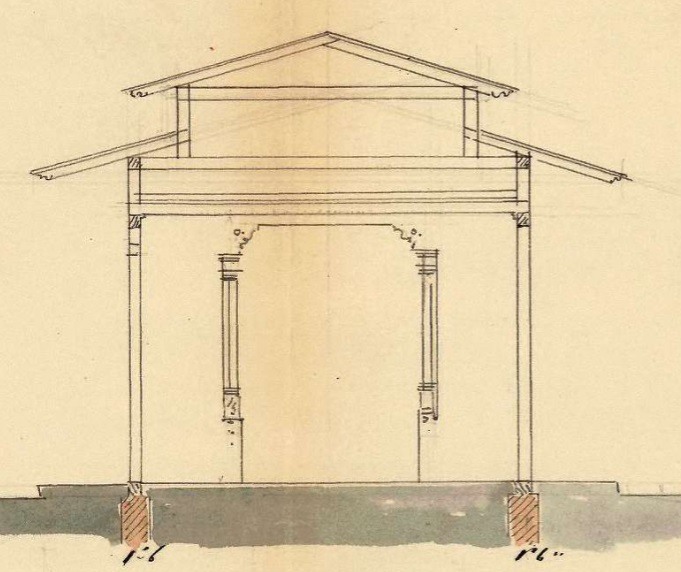
Frigyes Feszl's plan attached to the 1867 request for permission to set up the kiosk in Kőbánya (Source: Budapest Archives, Reference No.: XV.17.b.312 - 40/1867.)

Ice cream machine advertisement from the 1872 issue of Vasárnapi Ujság
Although Hebe's Kiosk operated until 1866, seeing Fischer's success, ice cream parlours opened one after the other, in 1845 there were already 19 of them in Pest, and since then, ice cream has enjoyed enormous popularity. Színház Square, later Vörösmarty Square, has since been completely rebuilt, but famous ice cream parlours and pastry shops, such as Gerbeaud, still carry the legacy of the first ice cream parlour to this day. In this heat, it is worth visiting the old legendary ice cream parlours, as a frozen sweet can really be enjoyed at this time.
Cover photo: Színház Square in 1845, engraving by Rudolt Alt. Hebe's Kiosk can be seen on the left side of the picture (Source: FSZEK Budapest Collection)

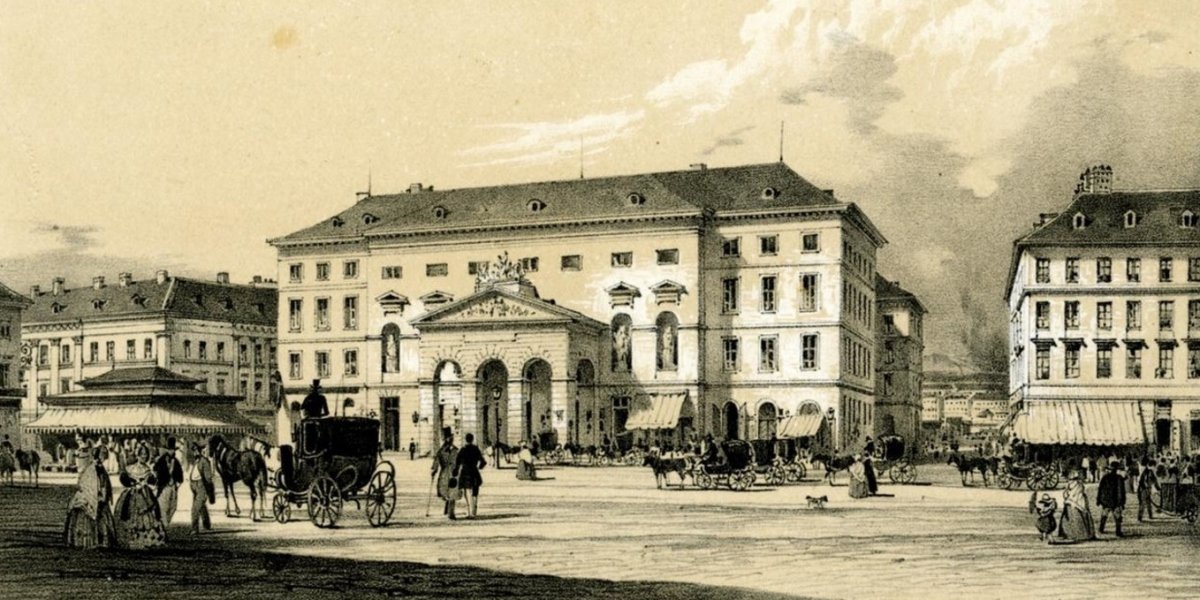


































Hozzászólások
Log in or register to comment!
Login Registration